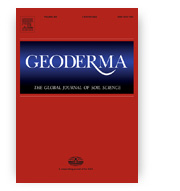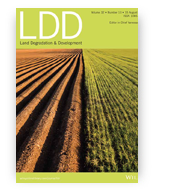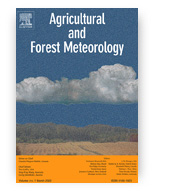
Research papers of the month – January 2022
We present the highest-score research papers of January 2022. These papers have ben published in journals with the highest Ministerial score – 200 points.
Evidence of prehistoric and early medieval agriculture and its impact on soil and land relief transformation in the Białowieża natural forest (NE Poland)
Mateusz Krupski, Bogusława Kruczkowska, Piotr Kittel, Michał Jakubczak, Skrzyński Grzegorz, Alexandra Golyeva, Kamil Niedziólka, Przemysław Urbańczyk
Geoderma
Ministerial score = 200.0
Journal Impact Factor (2020) = 6.114 (Q1)
 The Białowieża Forest is one of the few relics of temperate, old-growth woodlands in Europe considered “natural”. Recent research revealed there the presence of numerous anthropogenic landforms associated with prehistoric, medieval and modern-era human activities. They include systems of rectangular plots separated by embankments – linear forms up to several dozen centimetres high, well distinctive in airborne laser scanning visualizations but relatively poorly visible in the landscape. The field system at the archaeological site of Postołowo, located on a gentle slope currently entirely covered by a mixed forest (Carpinion betuli dominant), was selected for detailed study. The soils of the former arable fields and field boundary embankments were investigated using a multi-proxy approach, including analyses of soil micromorphology, soil physical and chemical properties, as well as sedimentological, archaeological, plant macro-remains and phytolith studies and radiocarbon dating. The objectives were to assess the impact of suspected past agriculture on soils and land relief and to establish a chronology of land use. Evidence of ancient vegetation clearance by burning was confirmed and two distinct episodes of cereal cultivation (including rye), without intensive manuring were dated in the Roman Period (ca 2nd century AD) and in the Early Middle Ages (ca 10th century AD). In the latter case, agriculture triggered soil erosion that led to accumulation of slope deposits; at least some of the field banks accumulated and/or were constructed during this period. Altogether, past agriculture resulted in spatial differentiation of soil morphology: with Brunic Arenosols in the upper parts of the slope and Brunic Umbrisols downslope. It is hypothesized that ancient cultivation in the Białowieża Forest evidenced by the remains of field systems, was limited to relatively short chronological periods and was restricted to certain land patches (microregions) surrounded by unused, forested terrain.
The Białowieża Forest is one of the few relics of temperate, old-growth woodlands in Europe considered “natural”. Recent research revealed there the presence of numerous anthropogenic landforms associated with prehistoric, medieval and modern-era human activities. They include systems of rectangular plots separated by embankments – linear forms up to several dozen centimetres high, well distinctive in airborne laser scanning visualizations but relatively poorly visible in the landscape. The field system at the archaeological site of Postołowo, located on a gentle slope currently entirely covered by a mixed forest (Carpinion betuli dominant), was selected for detailed study. The soils of the former arable fields and field boundary embankments were investigated using a multi-proxy approach, including analyses of soil micromorphology, soil physical and chemical properties, as well as sedimentological, archaeological, plant macro-remains and phytolith studies and radiocarbon dating. The objectives were to assess the impact of suspected past agriculture on soils and land relief and to establish a chronology of land use. Evidence of ancient vegetation clearance by burning was confirmed and two distinct episodes of cereal cultivation (including rye), without intensive manuring were dated in the Roman Period (ca 2nd century AD) and in the Early Middle Ages (ca 10th century AD). In the latter case, agriculture triggered soil erosion that led to accumulation of slope deposits; at least some of the field banks accumulated and/or were constructed during this period. Altogether, past agriculture resulted in spatial differentiation of soil morphology: with Brunic Arenosols in the upper parts of the slope and Brunic Umbrisols downslope. It is hypothesized that ancient cultivation in the Białowieża Forest evidenced by the remains of field systems, was limited to relatively short chronological periods and was restricted to certain land patches (microregions) surrounded by unused, forested terrain.
DOI:10.1016/j.geoderma.2021.115668
READ THE PAPER UPWr Base
Humic fractions as indicators of soil organic matter responses to clear-cutting in the mountain and lowland conditions of south-western Poland
Elżbieta Jamroz, Maria Jerzykiewicz
Land Degradation & Development
Ministerial score = 200.0
Journal Impact Factor (2020) = 4.977(Q1)
 Clear-cutting means forest removing (stem only) and is the most common type of forest harvesting but undoubtedly has a negative impact on the C budget in soils. This work aimed to describe responses of soil organic matter (SOM) in the mixed coniferous forest to the removing of trees under temperate climate conditions of lowland and mountain regions in south-western Poland. Investigated soils were described as Brunic Arenosols derived from sand with the average content of total organic carbon (TOC) in the Oa horizons 244 g·kg-1, in the lowland and Dystric Cambisols derived from gneiss with the average content of TOC in the Oa horizons 309 g·kg-1, in the mountain regions. Analysed soils were very acidic in the both regions (pH 2.7–3.5 in the topsoil). In the experiment two replicated soil profiles were located on each site, both after clear-cutting and without any harvesting. Humic fraction was isolated from Oa and A horizons, differences between investigated objects were checked with a significance P <0.05, (n=16). Using instrumental analysis, like EPR, 1H NMR and FTIR spectroscopy applied to isolated humic fractions, it has been found that clear-cutting alters C cycling and accelerates decomposition in the forest floor leading to loss of humic fractions in the investigated soils. In the mountain forests the more labile, low-molecular weight fulvic fraction decreased as the effect of harvesting practice by 30% in Oa horizon and by 54% in A horizon. Analysis of stable radicals by EPR showed a decrease in radical concentration observed for humic acids (HA) from mountain clear-cut areas compare to the undisturbed forest. Results presented in this paper have proved less aliphatic character of HA molecules from the lowlands, compared to the mountain forest as the effect of clear-cutting. Changes in plant cover observed as a consequence of deforestation lead to the decrease in concentration of humic fractions with different solubility properties.
Clear-cutting means forest removing (stem only) and is the most common type of forest harvesting but undoubtedly has a negative impact on the C budget in soils. This work aimed to describe responses of soil organic matter (SOM) in the mixed coniferous forest to the removing of trees under temperate climate conditions of lowland and mountain regions in south-western Poland. Investigated soils were described as Brunic Arenosols derived from sand with the average content of total organic carbon (TOC) in the Oa horizons 244 g·kg-1, in the lowland and Dystric Cambisols derived from gneiss with the average content of TOC in the Oa horizons 309 g·kg-1, in the mountain regions. Analysed soils were very acidic in the both regions (pH 2.7–3.5 in the topsoil). In the experiment two replicated soil profiles were located on each site, both after clear-cutting and without any harvesting. Humic fraction was isolated from Oa and A horizons, differences between investigated objects were checked with a significance P <0.05, (n=16). Using instrumental analysis, like EPR, 1H NMR and FTIR spectroscopy applied to isolated humic fractions, it has been found that clear-cutting alters C cycling and accelerates decomposition in the forest floor leading to loss of humic fractions in the investigated soils. In the mountain forests the more labile, low-molecular weight fulvic fraction decreased as the effect of harvesting practice by 30% in Oa horizon and by 54% in A horizon. Analysis of stable radicals by EPR showed a decrease in radical concentration observed for humic acids (HA) from mountain clear-cut areas compare to the undisturbed forest. Results presented in this paper have proved less aliphatic character of HA molecules from the lowlands, compared to the mountain forest as the effect of clear-cutting. Changes in plant cover observed as a consequence of deforestation lead to the decrease in concentration of humic fractions with different solubility properties.
DOI:10.1002/ldr.4158
READ THE PAPER UPWr Base
Microarthropods and vegetation as biological indicators of soil quality studied in poor sandy sites at former military facilities
Iwona Gruss, Jacek Twardowski, Diana Nebeská, Joseph Trögl, Tatyana Stefanovska, Valentyna Pidlisnyuk, Iva Machova
Land Degradation & Development
Ministerial score = 200.0
Journal Impact Factor Impact Factor (2020) = 4.977(Q1)
 Biota play major roles in soil function and are highly sensitive to any disturbances including land degradation. However, it is not fully understood which organisms and what parameters can be useful in assessing soil quality. To fill this research gap we searched for good indicators of changes in environmental quality that could help to assess land degradation. Next to indicators using physical and chemical parameters, biological agents can also provide a lot of information. To obtain such knowledge we compared the soil quality of former military sites, which differed mainly in the texture, nutrients and organic carbon content based on fauna and vegetation indices. Among the fauna indices were Collembola and Acari abundance, Soil Biological Quality index (QBS-ar), decomposition rate and feeding activity. The Ellenberg index was used as a vegetation indicator, in which the response to pH, nutrients, and moisture was analysed. The experiment was conducted at 2 former military sites in the Czech Republic. Site 2 was characterised by higher nutrient content and a more compact soil structure in comparison to site 1. It was found that almost all fauna and vegetation indices showed better soil quality in site 2. The significant changes were indicated by the Collembola abundance, QBS-ar index and feeding activity, as well as response to pH considering vegetation indicators. Finally, we conclude the usefulness of biological indicators for monitoring the quality of soil, which can be adopted when making decisions concerning land use.
Biota play major roles in soil function and are highly sensitive to any disturbances including land degradation. However, it is not fully understood which organisms and what parameters can be useful in assessing soil quality. To fill this research gap we searched for good indicators of changes in environmental quality that could help to assess land degradation. Next to indicators using physical and chemical parameters, biological agents can also provide a lot of information. To obtain such knowledge we compared the soil quality of former military sites, which differed mainly in the texture, nutrients and organic carbon content based on fauna and vegetation indices. Among the fauna indices were Collembola and Acari abundance, Soil Biological Quality index (QBS-ar), decomposition rate and feeding activity. The Ellenberg index was used as a vegetation indicator, in which the response to pH, nutrients, and moisture was analysed. The experiment was conducted at 2 former military sites in the Czech Republic. Site 2 was characterised by higher nutrient content and a more compact soil structure in comparison to site 1. It was found that almost all fauna and vegetation indices showed better soil quality in site 2. The significant changes were indicated by the Collembola abundance, QBS-ar index and feeding activity, as well as response to pH considering vegetation indicators. Finally, we conclude the usefulness of biological indicators for monitoring the quality of soil, which can be adopted when making decisions concerning land use.
DOI:10.1002/ldr.4157
READ THE PAPER UPWr Base
Modeling wheat and triticale winter hardiness under current and predicted winter scenarios for Central Europe: A focus on deacclimation
Marcin Rapacz, Alicja Macko-Podgórni, Barbara Jurczyk, Leszek Kuchar
Agricultural and Forest Meteorology
Ministerial score = 200.0
Journal Impact Factor (2020) = 5.734(Q1)
 Winter hardiness depends on the ability of plants to tolerate a wide spectrum of environmental stresses, which can be affected by climate change in complex ways. Here, empirical Partial Least Squares Regression (PLSS) models of winter survival (WS) of winter wheat (Triticum aestivum L.) and triticale (Triticosecale x Wittmack) were created using data from six years of field experiments at multiple locations throughout Poland. These included 553 winter wheat and 155 triticale accessions. Our aims were to: 1) predict WS on the basis of meteorological data; 2) identify the most critical weather events affecting WS of winter wheat and triticale under Polish conditions; and 3) predict WS for the simulated winters of 2040, 2060 and 2080 under climate change scenarios RCP2.6, RCP4.5, RCP6.0 and RCP8.5 for the experimental site with the lowest mean WS rate during the field experiments. The empirical models showed a high R2 for winter wheat (0.751), and a low R2 for winter triticale (0.160), because of the low winter damage to triticale observed during the experiments. The key climate factors affecting WS varied between species. Winter wheat was affected by winter severity, the number of freezing-thawing cycles, the thermal vegetation index and the freezing index in various winter months. Triticale was affected by late winter ice encasement and high numbers of freeze-thaw events. The predictions indicated that the WS of both winter wheat and triticale may decrease in the future, especially when more extreme climate change scenarios were considered. The main issue will be cold deacclimation connected with climate warming which will be more important for WS than the general increase in minimum winter temperatures. This finding indicates that deacclimation tolerance should be included in wheat and triticale breeding programs as a trait crucial for WS under future winters, at least in Central Europe.
Winter hardiness depends on the ability of plants to tolerate a wide spectrum of environmental stresses, which can be affected by climate change in complex ways. Here, empirical Partial Least Squares Regression (PLSS) models of winter survival (WS) of winter wheat (Triticum aestivum L.) and triticale (Triticosecale x Wittmack) were created using data from six years of field experiments at multiple locations throughout Poland. These included 553 winter wheat and 155 triticale accessions. Our aims were to: 1) predict WS on the basis of meteorological data; 2) identify the most critical weather events affecting WS of winter wheat and triticale under Polish conditions; and 3) predict WS for the simulated winters of 2040, 2060 and 2080 under climate change scenarios RCP2.6, RCP4.5, RCP6.0 and RCP8.5 for the experimental site with the lowest mean WS rate during the field experiments. The empirical models showed a high R2 for winter wheat (0.751), and a low R2 for winter triticale (0.160), because of the low winter damage to triticale observed during the experiments. The key climate factors affecting WS varied between species. Winter wheat was affected by winter severity, the number of freezing-thawing cycles, the thermal vegetation index and the freezing index in various winter months. Triticale was affected by late winter ice encasement and high numbers of freeze-thaw events. The predictions indicated that the WS of both winter wheat and triticale may decrease in the future, especially when more extreme climate change scenarios were considered. The main issue will be cold deacclimation connected with climate warming which will be more important for WS than the general increase in minimum winter temperatures. This finding indicates that deacclimation tolerance should be included in wheat and triticale breeding programs as a trait crucial for WS under future winters, at least in Central Europe.
DOI:10.1016/j.agrformet.2021.108739










